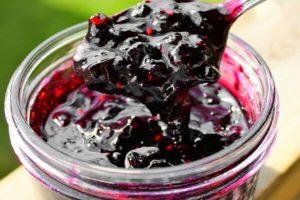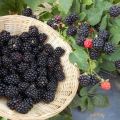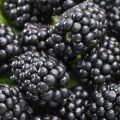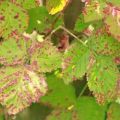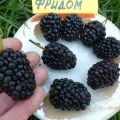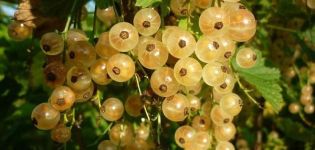Blackberry jelly recipes for the winter without gelatin
Blackberries are valued for their rich composition and many beneficial properties, while the low calorie content of the product allows it to be used even in dietary nutrition. The fruiting period of berries is relatively short, so many gardeners are beginning to preserve them. One of the simplest and most affordable options are recipes for making blackberry jelly for the winter.
Content
Where to start procurement of raw materials?
To get a delicious blackberry jelly, it is important to collect high-quality ripe berries. Fruits ripen in August and early September. Regardless of which of the recipes is chosen, only fully ripe berries must be taken for cooking. Blackberries differ in that unripe fruits do not ripen after harvest, so you should not expect the appearance of taste from green berries.
Before using blackberries as an ingredient, preliminary preparation is required. The main actions are as follows:
- remove garbage in the form of leaves, twigs and insects;
- rinse under a gentle stream of water in a colander, since the berries are easily damaged by external influences;
- wait for excess moisture to drain;
- remove ponytails.
Leaves with tails are torn off by turning in a circular motion. At the end of the work, it is required to conduct a control check and remove the berries with damage.
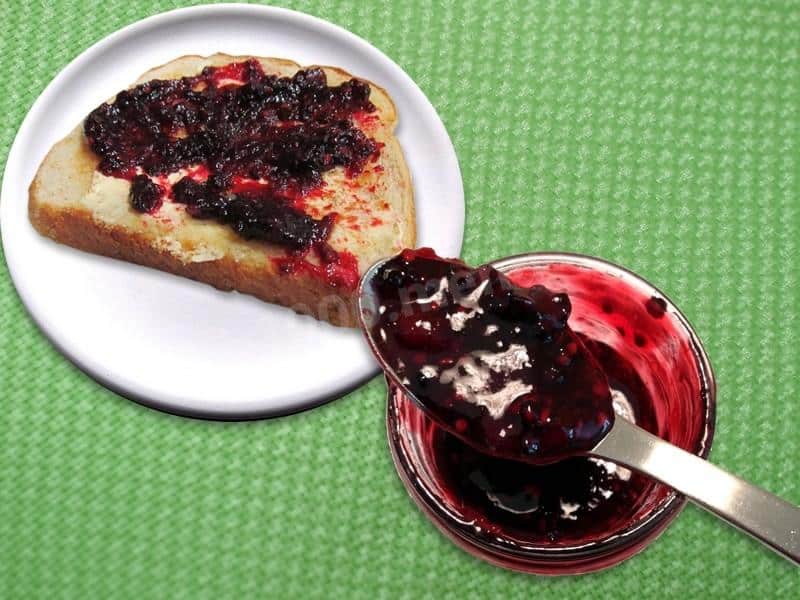
Blackberry jelly options
Today there are a fairly large number of blackberry cooking options, so everyone can choose the most suitable one. The main differences lie in the proportions of sugar and berries.
Blackberry jelly for the winter - a recipe without gelatin
This recipe will allow you to get a dessert, the consistency of which is a cross between jelly and traditional jam. For cooking, take the following ingredients:
- blackberries - 1 kg;
- berry leaves - 100 grams;
- sugar - 1 kg;
- citric acid - 5 grams;
- water - 0.5 liters.
Instead of citric acid, you can take ascorbic acid. Boil water with leaves for 20 minutes, then add sugar and bring to a boil, controlling the fact of complete dissolution of sugar. After that, pre-sorted and prepared blackberries are immersed in syrup, leaving them for 2 hours. After this time, the blackberries will completely give up their juices. Next, acid is added to the mixture and cooked for 10 minutes. The jam is poured into containers and rolled up with lids.
Pitted method
For this recipe, you will first need to make blackberry juice. This can be done with a blender or juicer.The resulting juice is carefully filtered through cheesecloth, excluding the ingress of seeds and the remaining pulp of the berries. The recipe will require the following ingredients:
- blackberries - 1 kg;
- sugar - 1 kg;
- water - 150 ml;
- citric acid - 5 grams.
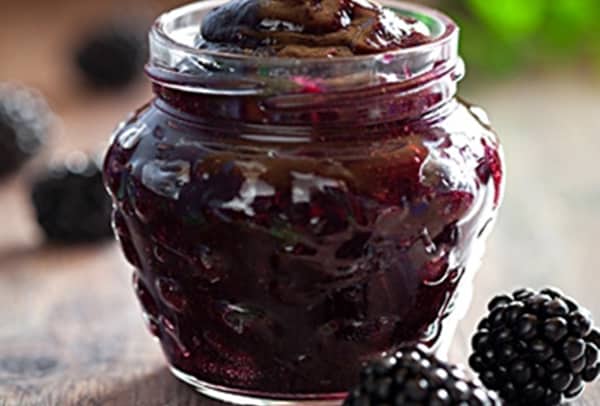
Sugar is added to the juice and boiled for 30 minutes, while the resulting foam is periodically removed. The fire should not be too strong, otherwise the mixture will start to burn and the dessert will have an unpleasant aftertaste. Citric acid is added 5 minutes before removing from heat. The degree of readiness of the jelly can be determined in several ways:
- the volume of the mixture has decreased by 2 times;
- large bubbles began to form on the surface;
- foam is formed in a small amount and is localized only in the center;
- the spoon dipped into the liquid, when taken out, is covered with an even layer without dripping;
- a drop of dessert on a cold saucer does not spread and freeze, but does not spread over the surface of the dish.
Ready jelly, without removing from the fire, is sequentially poured into jars and rolled up with metal lids. Jelly is considered to be well prepared if, when finished, the dessert has a glassy sheen on the surface, and its shade matches the color of the berries.
It is worth considering that for cooking it is better to choose dishes with a large bottom diameter and low sides, since the mixture in this case boils down better and faster. You should not use enamel dishes with a too thin bottom for cooking, as in this case the jelly will burn.
The easiest way to jelly
The blackberries are placed in a blender and brought to a uniform state. After that add granulated sugar in the amount of 1 kg per 1 kg of berries. For a less sweet dessert, you can add less sugar - 600 grams.
This grated mixture is laid out in containers and placed in the refrigerator. The consistency of jelly will resemble jam and immediately after cooking it can be eaten, used as an ingredient in the preparation of sweet dishes and baked goods. Dessert has a limited shelf life, so cooking in large quantities is not recommended.

Whole Berry Recipe
Whole berries are used as a decorative element in this “cold” recipe. Such desserts are mainly prepared as holiday treats for guests at special events. To do this, pure juice is obtained from blackberries, thoroughly clearing it of seeds and pulp.
For 1 liter of juice, you need to prepare 800 grams of sugar, 15 grams of gelatin. Sugar is dissolved in juice and gelatin pre-soaked in water is added. The mixture is left for a while and the foam formed on its surface is removed. After that, the liquid is poured into small containers, whole blackberries are placed inside and put into the refrigerator for several hours to solidify.
For decoration, choose whole berries without signs of damage. There is no limit on the number of fruits, so blackberries are added as desired.

Frozen blackberries
Jelly from frozen blackberries is not inferior in quality and content of nutrients to fresh berries. For the recipe, the berries are thawed and placed in a blender. Next, add sugar in a 1: 1 ratio. It is worth considering that the berries are thawed only once, since repeated freezing leads to a loss of product quality.
Blackberry jelly with gelatin
For the recipe, you can use both frozen and fresh berries. For cooking you will need:
- blackberries - 300 grams;
- water - 750 ml;
- gelatin - 20 grams;
- honey - 2 tsp.

Add 100 ml of water and gelatin to a small saucepan. Prepared blackberries are placed in a blender and water is added. Beat the mixture thoroughly until smooth. Next, the process looks like this:
- gelatin is heated to 60 C, that is, to a state close to boiling;
- add the beekeeping product and mix thoroughly;
- slowly pour in liquid from a blender;
- mix the resulting mixture thoroughly.
The semi-finished dessert is poured into containers, which are placed in a cool place for several hours to obtain a jelly consistency.
When cooking, the amount of gelatin or pectin is calculated so that there are 5 to 15 grams of product per 1 kg of berries. The more the amount of gelling substance in the recipe, the more viscous in consistency the finished blackberry dessert will be. If there are no such ingredients at hand, then you can use agar-agar at the rate of 9 to 13 grams per 1 liter of juice.

Option without cooking
The option without boiling makes it possible to preserve all the value and usefulness of the blackberry composition. This is often referred to as "raw" because it does not involve any heat treatment. The main requirement for berries is that they must be fully ripe and unspoiled, while it is permissible to use mashed fruits in the recipe.
The cooking recipe is as follows:
- 1 kg of fresh blackberries;
- 1-1.5 kg of sugar, depending on the desired sweetness of the finished dessert.
Blackberries are placed in a container and covered with sugar on top. Further, the mixture is thoroughly ground with a crush and left to infuse for 12 hours in a cool room. After the final dissolution of granulated sugar, the berry mixture is mixed well, and then laid out in jars. Closing with plastic lids is acceptable if the blackberry dessert is planned to be eaten in the near future. For longer storage, the jars are sterilized and, after unfolding the jelly, they are closed with a metal lid.
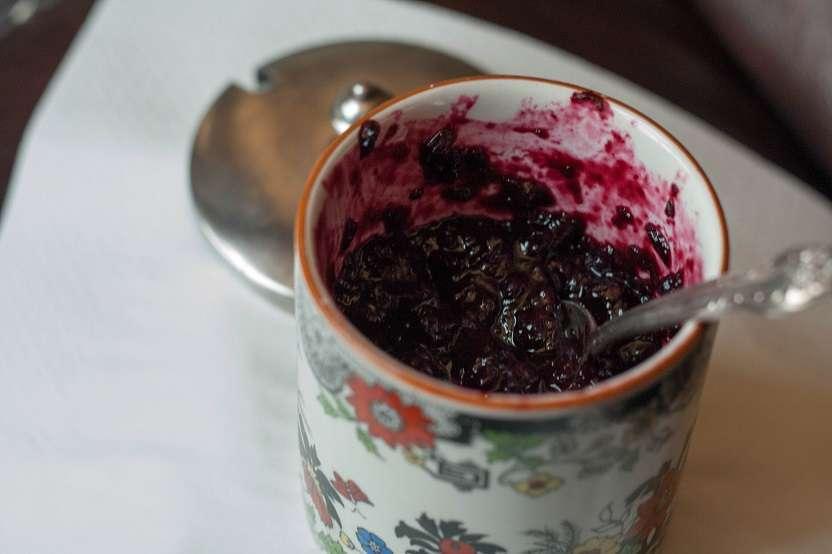
How to store?
Store workpieces in a cool dark place. If the recipe involves a hot cooking method, then the container with the berry contents is turned over with the lid down, placed on a flat surface and wrapped in a warm blanket. After the cans have completely cooled down to room temperature, the containers are removed or another place intended for storing preserves.
Blackberry jelly under a plastic lid is stored in the refrigerator for no more than 4 months. The same storage period is set for winter blanks after opening.
